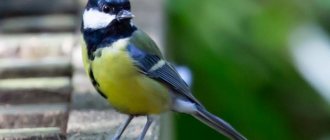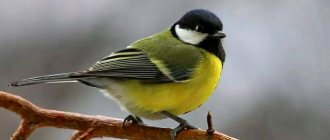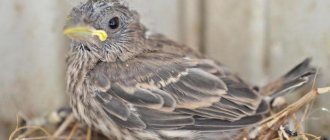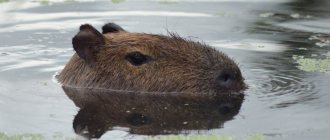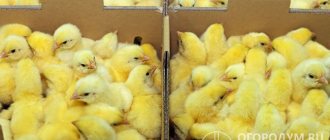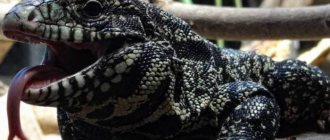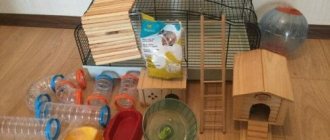How often do sparrows breed?
There are usually two, less often three, broods per year. The female lays one egg per day and incubates it for 11-12 days. The male replaces the female on the nest 4–6 times during the day (up to 25 minutes each time); at night only the female incubates. The chicks stay in the nest for 10–14 days.
Interesting materials:
Is it possible to connect a keyboard to a laptop via USB? Can I connect 8 ohm speakers to a 4 ohm amplifier? Is it possible to connect a monitor via Type-C? Is it possible to connect a music center to a PC? Is it possible to connect multiple devices via Bluetooth? Is it possible to connect a laptop to a car? Is it possible to connect a laptop to a regular TV? Is it possible to connect a laptop to a processor? Is it possible to connect a laptop to a DVR? Is it possible to connect a regular gas stove to a cylinder?
Origin of the species and description
Photo: Sparrow
The sparrow is a widespread bird from the passerine family of the same name.
It is said that the thievish nature of the sparrow gave this bird its name. This happened at the moment when the feathered stole a bun from the baker, and he shouted after him: “Beat the thief!” This is how the sparrow got its name.
Ornithologists identify about 22 species of these birds, eight of them live nearby; the most commonly found species of sparrows are:
- brownie;
- field;
- black-breasted;
- stone;
- red;
- snowy;
- short-toed;
- Mongolian earthen.
The appearance of a sparrow is familiar to almost everyone from childhood. This is a small bird, but its beak is quite massive. The colors of the sparrow are dominated by gray, light brown and dark brown tones. Each sparrow species has its own distinctive features, some of which we will describe.
Video: Sparrow
The black-breasted sparrow has a chestnut head, neck, wings and back of the head. Light motley spots are observed in the area of the back. The sides and cheeks of the sparrow are painted in light colors. The craw, throat, and half of the breast are painted black. The wings are lined with a horizontal dark stripe. Males look much more elegant and brighter than females.
The snow sparrow (finch) is decorated with long black-and-white wings and a gray tail with lighter feathers along the edge. A black spot stands out noticeably in the throat area of this sparrow.
The stone sparrow is quite large compared to its relatives; the distinctive feature of this bird is a wide light stripe running along the crown, and its beak is light brown. The chest and throat are light-colored with speckles, the crop is decorated with a spot of bright lemon color.
The red sparrow has a rich chestnut color, the back of the head, back and wings of this particular shade. The female is distinguished by a light gray or brownish breast.
The short-fingered sparrow is very small, the color of its feathers is sandy, narrow small stripes of light color can be seen on the throat and end of the tail.
The Mongolian ground sparrow has a nondescript gray coloration, there are lighter spots on it, but they stand out very faintly, so sometimes they are not visible at all.
sparrow nest
Sparrow's nest
Sparrows settle in residential buildings, building nests under eaves and on common balconies. Birds can also live in tree hollows. Sparrows do not like to spend a lot of time creating a nest, so they often simply pile pieces of grass, straw and leaves in a secluded place. Due to the fact that the structure is fragile, it can be destroyed by winds and heavy rains. In this case, construction begins again. The diameter of the nest is approximately 12 cm, the height is 7 cm. The bottom is lined with feathers, leaves and materials that can provide heat. The outlet of the nest is located on the side.
Interesting fact : sparrows are able to occupy other people's nests, evicting the previous inhabitants.
Habitats
Where does the sparrow live? Each species has its own living environment that is comfortable for it.
The only place that sparrows do not inhabit is the North Pole and other regions with unfavorable climatic conditions.
A huge number of individuals settled throughout Australia, as well as in the forest belt of the tundra.
Sparrow's voice
Sparrow trills cannot be called melodic. During communication, the bird emits one-time calls, similar to whistling and chirping. House sparrows have a rougher and more sonorous voice. Stone ones make dull sounds, consisting of long trills and short intermittent signals.
The black-breasted sparrow has a loud, high-pitched voice. Representatives of the species communicate in long trills that come in continuous bursts. The snow sparrow echoes its relatives with chirping sounds, which can be either short or stretched over entire long series.
Tree sparrows
They are not so attached to human habitats. Therefore, they often settle in steppe and field areas. The name of the bird species comes from this feature. The house sparrow lives in cities and residential areas. But the field ones can be found on the outskirts of villages, which is why they are often called village ones. These birds have no external differences in gender. Females and males have the same feather color and size.
Tree sparrows prefer warm and dry climates. They never live together with the house species of birds. If they have to cross paths, it is always accompanied by fights and competition for territory. Each species has high social activity. These birds are not afraid of people or pets. Therefore, you can very often see how a sparrow brazenly eats food from a bowl of a street dog, which is sleeping peacefully, not noticing that it is being eaten by a small bird.
During the spring and summer, tree sparrows eat insects, and after the crops ripen, they switch to food from fields, gardens and vineyards. Plant food during this period is quite enough for them. When cold weather sets in, birds have to make do with grains and weed seeds. Sometimes they fly into the courtyards of residential buildings to find some food for themselves.
Should a baby sparrow be fed at night?
If the feeding process is interrupted for more than two hours, the chick is likely to die. This is due to the specific digestive system and very fast metabolism. You can sleep peacefully at night because birds' metabolism naturally and significantly slows down at night.
Interesting materials:
How to turn off email notifications in Discord? How to disable Android system update notifications? How to turn off Facebook notifications on your computer? How to turn off vibration when picking up the handset? How to disable all paid services on Velcom? How to disable pop-up messages from mts? How to turn off sound in a separate window? How to turn off sound in Word 2007? How to mute the sound of incoming messages in Odnoklassniki? How to unscrew the crankshaft pulley bolt?
Nutrition
Birds are completely unpretentious in food. They are content with both human food - crumbs, seeds, cereals, and insects.
Sparrows are not known for their modesty. They can calmly watch a person eat and eat the rest of his food.
Sparrow
The sparrow is a small bird widespread in cities. The weight of a sparrow is only from 20 to 35 grams. Meanwhile, the sparrow belongs to the passerine order, which in addition to it includes more than 5,000 species of birds. The largest representative of the order is the raven (its weight is about one and a half kilograms), the smallest is the wren (weight up to 10 grams).
The sparrow got its name in ancient times and it is associated with the habits of these birds to raid farmland. While chasing the birds, people shouted “Beat the thief!” But in fairness, it is worth noting that raids on fields were not always carried out only by sparrows, but also by other representatives of the detachment.
There are two types of sparrows in Russia: the house sparrow, or city sparrow, and the field sparrow, or village sparrow.
Interesting facts about sparrows: the structure of the sparrow's eyes is such that birds see the world in a pinkish color. The sparrow's heart beats up to 850 beats per minute at rest, and during flight up to 1000 beats per minute. At the same time, severe fright can even lead to death for the bird, as it significantly increases blood pressure. The body temperature of a sparrow is about 40 degrees. A sparrow spends a lot of energy per day and therefore cannot starve for more than two days.
The color of the sparrow's plumage is brownish-brownish on top and light on the belly. Sexual dimorphism is developed among sparrows. The male can be identified by a large dark spot on the chin, which also extends to the crop and chest. The female, unlike the male, has a dark brown upper part of the head, while the male’s is gray. In addition, the male is generally more colorful than the female; in the spring his plumage is especially remarkable.
The back of the sparrow is brown and has longitudinal stripes. There are brown stripes on the head near the eyes. The upper tail is grayish or brownish in color. The wing feathers have a light orange border that forms stripes on the wing. The middle wing coverts have white tips. The color of the beak and legs is dark.
The female's plumage is less variegated. The bird's head and rump are brown, with light brown stripes running along the sides of the head. The feathering on the cheeks is grayish in color. The abdomen is light. Young sparrows are similar in appearance to the female. The bird's body length is only 15-17 cm. Weight ranges from 23-35 grams.
There are 16 subspecies of house sparrow:
Passer domesticus africanus Passer domesticus bactrianus Passer domesticus balearoibericus Passer domesticus biblicus Passer domesticus brutius Passer domesticus domesticus (Linnaeus, 1758) Passer domesticus hufufae Passer domesticus hyrcanus Passer domesticus indicus - Indian Passer domesticus maltae Passer domesticus niloticus Passer domesticus parkini Passer domesticus payni Passer domesticus persicus Passer domesticus rufidorsalis Passer domesticus tingitanus
Previously, the Indian sparrow, common in Central Asia, similar in color to the house sparrow, but migratory and less synanthropic, was considered as an independent species (P. indicus).
Initially, the distribution range of sparrows was limited to the territory of Northern Europe. However, subsequently the birds spread to almost all continents of the earth, except for the Arctic and some areas of southeast and central Asia.
Today, the sparrow can be found even in South Africa, Australia and America, where the bird was introduced at the beginning of the twentieth century.
The sparrow always chooses places to live in close proximity to humans. That is why sparrows can be found even in the north, in the tundra and forest-tundra zones (Yakutia, Murmansk region).
Sparrows lead a sedentary lifestyle. Only bird populations living in the northernmost parts of the range (for example, the White-headed Sparrow) go to warmer places for the winter. But their flight, as a rule, is not very far - up to a thousand kilometers.
The sparrow is a human companion everywhere. It adapts well to changing external conditions and human economic activity has practically no effect on it.
However, in large cities in recent years, a decrease in the number of sparrows has been noticed. The reason for this is the deterioration of the environmental situation, in particular the use of chemicals on the streets of megacities (for example, to combat snow).
Sparrows are distinguished by high fertility - this is what explains its wide distribution even in places unusual for it - in the northern territories. Sparrows also settle in towns, villages, suburbs - wherever people live. It is next to a person that the sparrow receives favorable conditions for reproduction, since it has no problems getting food.
The sparrow's main food is plant food. Sparrows catch insects in order to feed their chicks, which require protein food during the period of active growth. In rural areas, sparrows flock to fields and farmland to search for food, picking up grains or seeds of agricultural crops. The sparrow can sometimes cause significant damage to agriculture, pecking at fruits and berries in gardens and eating cereal crops (the sparrow causes the greatest damage in the summer: sunflower and hemp crops suffer from it).
In spring, sparrows peck young buds on garden trees and shrubs. But in the spring, sparrows are even able to bring benefits by pecking at harmful insects. If sparrows settle where there are no fields or gardens in the immediate vicinity, they obtain their food in meadows and forest edges, where they peck seeds of wild herbs or pick up insects.
One sparrow per day requires an amount of food equal to 10-15% of its weight. A sparrow spends a lot of energy per day and therefore cannot starve for more than two days. If the bird does not eat, it faces rapid hypothermia, since it has no fat reserves.
Sparrows are monogamous by nature. During the breeding season, birds look for a mate and remain faithful to their partner for at least a season, and sometimes for their entire life.
Sparrows begin building nests in March. Sparrows manage to make nests in the most unusual places: under the roofs of houses, in the burrows of other birds (swallows) and mammals (gophers or hamsters), in wells, in tree hollows, in rock crevices. An interesting fact: to build a home, tree sparrows choose places in the immediate vicinity or even in the walls of the nests of predators (ravens or eagles) - in this way they provide reliable protection for their nest.
Sparrows mainly nest in pairs. But sometimes they form flocks. The female begins laying eggs in April. Depending on the temperature conditions and the age of the bird, sparrows begin to lay eggs earlier or later - at the beginning or end of April. There are usually 5-7 (sometimes up to 10) eggs in a clutch. Incubation lasts 11-12 days. To feed their offspring, sparrows catch insects. Both parents share care of the offspring. The chicks grow quickly and are able to fly out of the nest already on the 10th day after birth.
After the chick flies out of the nest, the parents take care of it for some time. In general, it takes a sparrow about 40 days to breed and raise one offspring. Immediately after the first generation leaves the nest, the female begins a new clutch (usually this happens in the second half of June). Concerns about the first brood fall entirely on the male. In one season, sparrows can breed 2-3 offspring. All young sparrows from broods of the same season flock together in one flock and fly together to feed.
Source
What does a sparrow eat in the wild?
Sparrows are quite unpretentious in food, in addition, they are omnivores. Their food may consist of:
- Insects (grasshoppers, caterpillars, crickets).
- Berries (currants, cherries, grapes).
- Worms.
- Zeren.
In addition, they often pick up leftover human food.
During the cold season, it is difficult for sparrows to obtain food for themselves. Therefore, in winter, part of the flock dies of hunger.
Sparrows try to share food with each member of the flock. When encountering unfamiliar food, they will first explore it and only then taste it. People help by organizing feeders, to which the sparrows quickly adapted.
In the autumn-winter period, sparrows' food consists mainly of plant seeds and human food remains. Therefore, at this time they do not cause as much damage to the farm as in summer and spring. In the spring, they can peck buds on fruit trees, enter greenhouses and eat seedlings.
Sparrows have adapted well to feeders
Sparrow - enemy or friend
Previously, it was generally accepted that birds were extremely useful creatures. However, now scientists are beginning to doubt the benefits of some pichugs. So the sparrow ended up among the “dubious helpers.” And yet, there is more benefit from this tiny bird than harm.
It is enough to give a classic example - once the Chinese thought that sparrows were destroying their rice crop, so the bird was declared the main enemy, they were exterminated, knowing that sparrows could not stay in the air for more than 15 minutes. The Chinese simply did not allow them to land and the birds fell to the ground, already dead.
But after this, the real enemy came - insects. They multiplied to such an extent that there was no rice left at all, and almost 30 million people died from famine. So is it worth racking your brains over what has already been passed down by history? The small bird sparrow occupies a worthy place in nature, and man only has to protect it.
Character and habits of sparrows
Sparrows are quite arrogant and cocky birds. They can unceremoniously seize other people's territories and often start fights both among themselves and with other birds. For example, their collisions with tits are not uncommon, occurring when dividing the territory of a yard, park or other favorite place. If there is no reason to splash out aggression on other birds, quarrelsome sparrows can start fights with their relatives. Where they gather is always noisy, you can hear commotion, chirping, and chirping.
Sparrows are absolutely not characterized by quiet and cautious behavior. Any movement, movement of animals, birds or people causes an emotional response and excitement in the flock.
The habits of sparrows are largely determined by their close proximity to people. Thanks to this, they develop reflexes that allow them to build logical chains and make decisions based on them. If necessary, they can be quite patient, waiting for cats or other predators to move away from their feeders so that the sparrows can access the food.
Interaction with people
Sparrows have adapted well to living together near people. They are not at all afraid of humans; they often choose to build their nests near his home.
House sparrows are considered the most adapted to life near people. They got their name due to the fact that they often settle near residential buildings, trying to be closer to people.
Recommended by topic
Blackbirds Woodpecker Heron
There are often cases when sparrows directly fall into human hands, and people nurse them. This happens if fragile chicks fall out of the nest.
A chick on the ground is not always in danger. If he already has feathers, it means he is learning to fly, and his parents are watching him at this time. If there is no plumage and the chick is completely naked, it can be eaten by a predator or killed by the cold. In this case, it is worth taking him home to try to go out.
Sparrows have adapted to people so much that they are not even afraid to eat from their hands.
Sparrows can live in large cages and enclosures built by humans. They feel quite calm in captivity if you create comfortable conditions for them. As a rule, sparrows are kept in groups, as they are flocking birds. At the same time, catching a bird is very difficult. Therefore, tamed sparrows are quite rare.
In England, Belgium, and Holland, bird lovers keep light-colored sparrows in cages as domestic ornamental birds.
Reproduction and raising of offspring
Almost all species of sparrows are monogamous. Already at the age of one year, they reach sexual maturity, which is characterized by the onset of the mating season. Mating games usually take place in March. The exact time depends on the climate and region of residence in which the sparrows live. So, to begin the breeding season, they need a suitable temperature in the region of 6–10 ° C.
During the mating season, fights constantly occur among sparrows, which is accompanied by screams and unabating passions. Towards the end of March, stable pairs are formed and begin to build a nest for hatching future offspring.
Already in April, the female begins to lay eggs. Time is very valuable for sparrows, and all their actions are planned in advance. They need to have time to hatch more than one offspring, which dictates a strict “schedule”: up to 5 days are allotted for laying eggs and incubating them, two weeks for raising and feeding the offspring, and about two more weeks for raising the chicks after they have left the nest. When the couple completes these tasks, they prepare for the next clutch.
Newborn chicks in the nest
One clutch of a young female can contain from 2 to 7 eggs; in more mature individuals this figure can reach 10 eggs at a time. In southern climates there are usually more eggs than in northern ones. Hatching occurs over two weeks.
The more eggs there are in a clutch, the less chance of survival for all the offspring. This is primarily due to the order of distribution of food, which may not go to everyone, but only to the strongest chicks. Additionally, if the nest becomes too crowded, the babies may fall out. In rural areas, the survival rate of newborns exceeds that of chicks in the city, which is due to the large amount of food.
Grown-up chicks remain close to their native nests, not far from their parents. A small number of chicks scatter over several tens of kilometers, distancing themselves from their parents. Towards the beginning of autumn, young sparrows unite into flocks that search for food together. At night, they spend the night in large groups in open areas and gradually migrate to other territories distant from their place of birth. This is how the resettlement of the grown-up offspring occurs.
Caring for chicks
All chicks are born at the same time. Their skin has a blue and red tint, their body is completely naked, without fluff. Newborns are still completely helpless and constantly ask for food. Parents bring them insects, fly larvae, ant cocoons. Newborns often feed on those insects that are classified as economically harmful. Gradually, grains are added to the diet, and then seeds and even pieces of plant fruits. This happens towards the end of summer. The parents take care of the offspring, incubate the eggs and feed them together. The male and the female can take turns flying around all the chicks and putting pieces of food into their mouths.
On the 17th day of life, the chicks are considered strong enough to leave the nest and live an independent life.
Sparrows reach full maturity after the first year of life. However, in some species, sexual maturity occurs as early as 6-8 months. The chicks that were born first in the spring are considered old enough by the fall to engage in mating behavior: fight for females, try to build their own nests. However, they will have real breeding only next spring.
Nests occupied in autumn are used as overnight shelter in winter. One such dwelling can be used by sparrows for two to three years.
What is the difference between a house sparrow and a field sparrow?
I remember from school that we have at least two types of sparrows: the house sparrow and the field sparrow. But I completely forgot what their difference is. And then one day I was walking with a camera, and a flock of sparrows was swarming on the bushes at the feeder. After photographing their portraits, I decided to look into the issue of sparrow taxonomy in more detail.
The field sparrow (Passer montanus) is slightly smaller and somewhat slender compared to the house sparrow, has clearly visible black “earrings” on its white cheeks, and a brown “cap” on its head.
The house sparrow (Passer domesticus) is slightly larger and more pugnacious, which is why the tree sparrow prefers not to mess with it. The house sparrow has pronounced sexual dimorphism - males and females have very different colors (the field sparrow has the same color). Males have more brown spots and are brighter, while females are grey.
The black “tie” of the tree sparrow is weakly expressed, with a small black spot below the beak.
The male house sparrow has a large black patch covering the chin, throat, crop and upper chest.
It is believed that the house sparrow came to us from the Mediterranean and the Middle East, while the field sparrow came from Near Asia. The brownie, living up to its name, constantly lives next to a person, and has already managed to master all latitudes, while the field prefers to live in nature in the satisfying summer time, and spend the winter in unfavorable conditions in the city.
On the same day, I photographed a pair of white wagtails (Motacilla alba), also quite common birds for the city, on a tree. A long swinging tail (which is how she got her name), gray top, white bottom, white head with a black throat and cap.
Despite the fact that it willingly lives next to humans, the wagtail is still a migratory bird, but it arrives in our region very early, at the very beginning of spring.
Source
Candidate of Biological Sciences L. SEMAGO (Voronezh). Photo by I. Konstantinov.
He is always and everywhere in sight, but neither centuries-old neighborhood nor special study have so far given a complete picture of his family and social structure. He absolutely cannot stand close attention to himself. We've been neighbors for a long time, but what do we know about this bird? It is known that during the season the female lays three and even four times more eggs than are required for procreation in a quiet life. Indeed, life in the city next to a person is full of unpredictable turns and dangers. Perhaps a strict family structure helps the sparrow to withstand any surprises. Yes, yes, don't smile.
But what then is the noisy, almost year-round street mating of adult males with short breaks? In all local migratory and sedentary birds, mating is limited in terms and time, but in the sparrow it begins in the first thaw after the winter solstice, increasing towards spring; fades out when females sit on eggs; flares up with renewed vigor after the chicks fly out. But then the sparrows become brood hens again, although not as synchronously as the first time, and the subdued males behave more quietly. And when the molting begins in July, the outfit changes, everyone calms down: there’s no time for that. In the new dress, the males are again seized by a downright spring excitement, which does not fade away until the dead of winter.
The boyfriend's appearance doesn't matter. He can be as clean as a sunbeam, or black with stove soot, his feathers greasy from scraps, he can rush to the female he likes straight from a puddle on the road: the result will be the same.
Well, when three, five, or a dozen loud-mouthed males pounce on one female, not a trace of politeness and respectful gallantry remains: an ugly scene plays out with screaming, pinching, and tugging of feathers. People mistake this bird ritual for a street fight. (It would be appropriate to say here that sparrows usually fight one on one or, rarely, a couple against a couple and in silence, and the neighbors never have an interest in either the fight itself or its outcome: it’s none of our business, they say.) When At the sight of this scene, it occurs to the uninitiated that, enraged by some act incompatible with bird morality, the sparrow community gave the unfortunate sparrow a demonstrative thrashing. But screams and pinches, instead of humility and obedience, cause such rage in the sparrow that after five or six seconds this whole heap scatters in all directions.
In the autumn of the second year, when the young females of the new generation become independent birds, the old bachelors (it is quite acceptable to call a sparrow in the second year of life an old man) will not miss theirs. But many of the same age as these females, first-year sparrows, will find themselves in the position of their “uncles” and will try, like them, to lure the sparrow that seems free to them. Outwardly, a single female is no different from a married female, but a married female immediately makes it clear by her behavior what position she occupies. That’s why this “matchmaking” is so fleeting: the entire fuse burns out faster than a match.
In my city, I had to answer the same question more than once: “Why are there so few sparrows, has it been radiation that has destroyed their species?” No, not radiation. The number of sparrows in the city actually decreased, but because the townspeople themselves stopped feeding them with the same generosity. Remember, for example, how disheveled and greasy, but well-fed sparrows crowded around the stalls and trays, good-naturedly quarreling with each other and with pigeons over scraps of pies and pasties. Now all that remains is to live in landfills and garbage dumps.
The sparrows took advantage of the nationwide patronage of outbred pigeons after the Moscow festival in 1957 with enormous benefit. Tens of thousands of them freed on wherever the pigeons were fed. In the evenings, without flying anywhere for the night, they drowned out the roar of old trams with their chirping. In the morning, the asphalt under the overnight stay was like the floor under a roost in a chicken coop. But soon the love for the greedy and unkempt “symbol of peace” began to cool, and instead of bags of grain, handfuls began to be poured into the pigeons. And here the stay-at-home sparrows were the losers. Then it got even worse. But although we no longer see the former flocks, the noisy tribe does not fade away, and in the summer many of us are still prevented from finishing our pre-dawn dreams by the cheerful smack under the windows.
Source
Appearance and features
Photo: Sparrow bird
The appearance of a sparrow has been known to us since childhood. This is a small bird whose color has brown, brownish and gray tones. The sparrow's wings are decorated with dark and light stripes that stand out as specks. The head, abdomen and area around the ears of the sparrow are either light gray or light brown.
The dark massive beak clearly stands out on the small head of the bird. The sparrow's tail is not long, and the entire length of the sparrow's body can reach up to 15 cm, its body weight is about 35 grams. Sparrow wings reach a span of 26 cm.
The female sparrow is easy to distinguish from the male not only by size (she is a little smaller), but also by color, which is much more elegant in the male. It has bright spots on the chin and chest, which are not observed in females.
The sparrow's eyes are outlined with a grayish-brown edging. The legs of sparrows are short, thin and equipped with weak claws. The most common species we see are tree and house sparrows. The differences between these species are not difficult to detect. The male house sparrow wears a dark gray cap, while the male field sparrow wears a chocolate cap. On the wings of house sparrows there is one light stripe, and on the wings of field sparrows there are two. The tree sparrow has black braces on its cheeks and a white collar on its neck. The house sparrow is larger in size than its field brother.
The cervical spine of a passerine has twice as many vertebrae as that of a long-necked giraffe.
Natural enemies of sparrows
Photo: Sparrow in nature
Although sparrows have a cocky and brave character, this little bird has many enemies. Stray cats are passionate about hunting sparrows, and domestic cats are not averse to hunting these birds. A stray dog will also happily eat a sparrow if it is lucky enough to catch one. During the day, sparrows can suffer from the rapid attacks of the sparrowhawk, which always attacks suddenly and with lightning speed, catching unwary birds by surprise.
Often, even the sparrow standing on guard does not have time to come to its senses and warn its noisy fellow tribesmen. At night, sparrows become a snack for predatory owls, which with their keen eyesight can detect these small birds. Sometimes owls hoot loudly, which scares away the sparrows and forces the birds to come out of their hiding places, and then they attack the small frightened birds.
The cunning fox can also pose a danger to sparrows, often destroying their small nests and eating their chicks. The marten can also threaten sparrows, because moves excellently in the crown of trees. Hedgehogs, squirrels and ferrets will never refuse to snack on sparrow eggs if they discover a nest.
The difficult living conditions of sparrows also provoke the mass death of these birds. Often newborn chicks fall out of their nests, which leads the babies to death. Many sparrows (especially young ones) do not survive until spring, because it can be very difficult for birds to survive harsh, frosty and snowy winters.
It is almost impossible to find food in such difficult conditions; the birds wait for help from humans, carefully monitoring the replenishment of the feeders. In rural areas, it is easier for sparrows to overwinter; there they can find food in barns and sheds, where grain is often stored. That’s how difficult the life of these little birds is, who have more than enough enemies.

